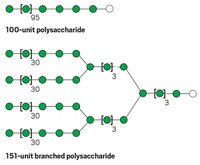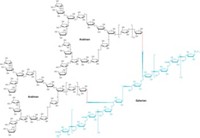Advertisement
Grab your lab coat. Let's get started
Welcome!
Welcome!
Create an account below to get 6 C&EN articles per month, receive newsletters and more - all free.
It seems this is your first time logging in online. Please enter the following information to continue.
As an ACS member you automatically get access to this site. All we need is few more details to create your reading experience.
Not you? Sign in with a different account.
Not you? Sign in with a different account.
ERROR 1
ERROR 1
ERROR 2
ERROR 2
ERROR 2
ERROR 2
ERROR 2
Password and Confirm password must match.
If you have an ACS member number, please enter it here so we can link this account to your membership. (optional)
ERROR 2
ACS values your privacy. By submitting your information, you are gaining access to C&EN and subscribing to our weekly newsletter. We use the information you provide to make your reading experience better, and we will never sell your data to third party members.
Synthesis
Chemists smash record for longest polysaccharide
Automated synthesizer strings together 1,080 sugars in a single glycan
by Bethany Halford
September 29, 2022
| A version of this story appeared in
Volume 100, Issue 35

Hooking sugar molecules together to make strings called glycans—also known as oligosaccharides and polysaccharides—is one of synthetic chemistry’s most bedeviling challenges. Carbohydrates are intrinsically complex and finicky reactants. Chemists led by Peking University’s Xin-Shan Ye report an automated solution-phase synthesizer that can hook up sugars to make polysaccharides of record-breaking length and bioactive oligosaccharides that could be used as drugs (Nat. Synth. 2022, DOI: 10.1038/s44160-022-00171-9). Using the device, Ye’s team created a polysaccharide composed of 1,080 sugar moieties with 4,320 stereogenic centers, which is the longest and largest synthesized to date. The researchers also used the system to build a version of the pentasaccharide drug fondaparinux, an anticoagulant that has historically been tough to make at large scale. Ye and colleagues were able to prepare more than a gram of a fondaparinux precursor that includes protecting groups. “This automated platform will not only benefit nonspecialists, who will be able to assemble target glycans, but can also be applied to the streamlined synthesis of other organic molecules of interest,” the researchers write in the paper.





Join the conversation
Contact the reporter
Submit a Letter to the Editor for publication
Engage with us on Twitter